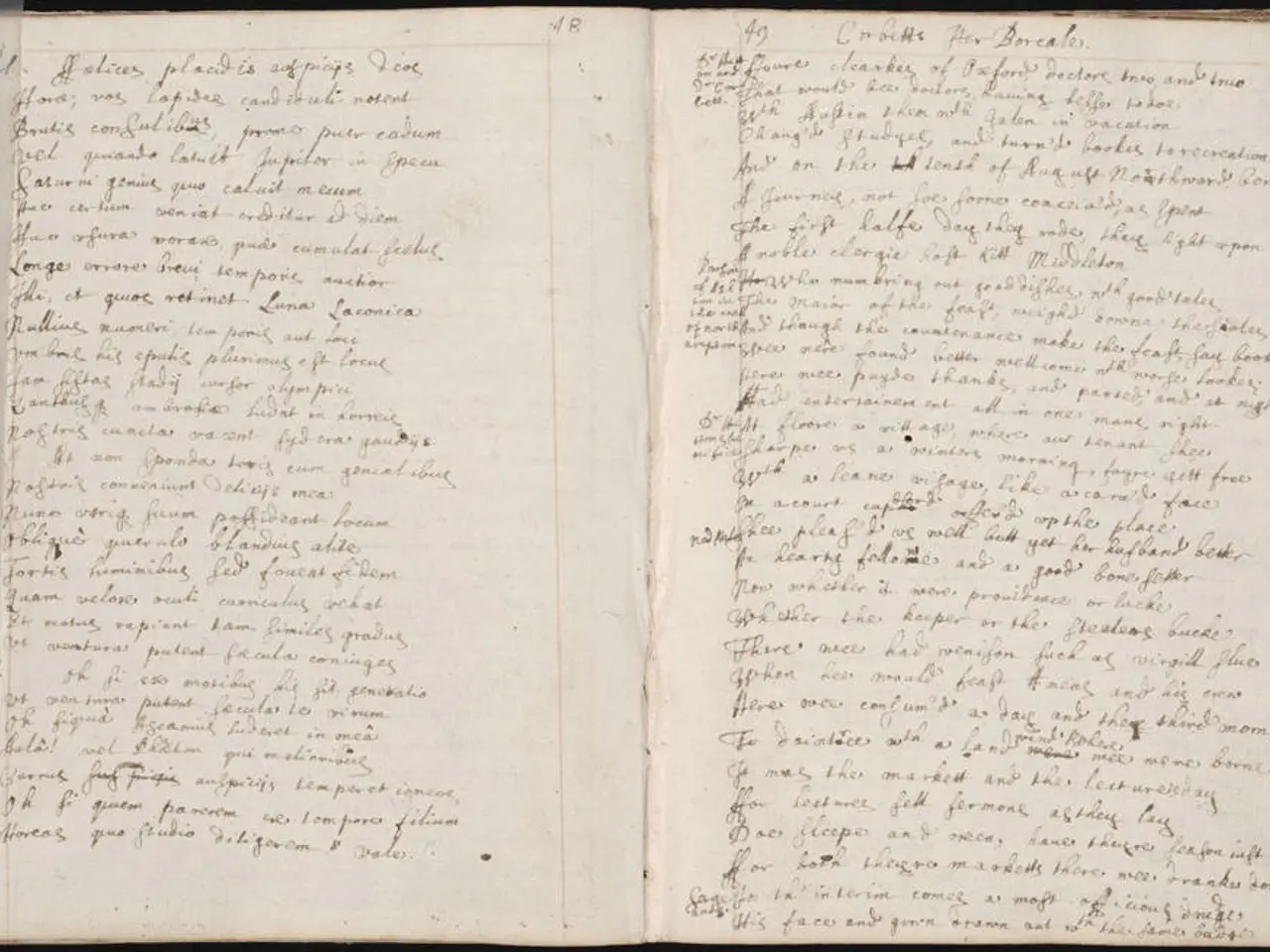Guide on Composing a Preface for Your Novel: Is It Essential?
In the world of publishing, a well-crafted preface can make all the difference in capturing a reader's attention and setting the tone for the book. Here's a comprehensive guide on how to write an engaging and informative preface.
Firstly, it's essential to define the purpose of your book. Clarify your intentions and provide context that is relevant to the book's subject matter. This will help readers understand why you wrote the book and what they can expect from it.
Next, connect with your audience. Use a conversational tone to make the reader feel included and interested in the journey ahead. Share what inspired you to write the book, which can help readers connect emotionally.
Outline the structure or approach of your book. Give readers a glimpse of how the book is structured or the approach you've taken. Highlight any central themes or arguments that will be explored.
Use clear and concise language. Be direct and avoid jargon or overly complex language that might alienate readers. Stay focused and keep your message concise and relevant to the book's main themes.
Include personal reflections if relevant. Discuss personal experiences or insights gained during the writing process. Thank anyone who contributed significantly to the book, such as mentors or sources.
End with an invitation. Encourage readers to embark on the journey with you, highlighting what they stand to gain from reading the book.
By following these steps, you can create a preface that not only informs but also engages your readers, setting the stage for a fulfilling reading experience. The golden rule of prefaces is to keep them short, interesting, and easy to skip without missing essential information.
Examples of prefaces can be found in books like "The Venging" by Greg Bear and "Think and Grow Rich!" by Napoleon Hill. A program called Atticus can help with formatting a book, including the preface, and ensure consistency in design. Formatting a preface in Microsoft Word is simple if the trim size, margins, and font licenses are known.
A preface usually includes information about who the author is, what the book is about, when and where it was written, and why it was written. It is formatted similarly to a chapter heading, but with less ornamentation, no larger first letters, no indentation in the first paragraph, and often with roman numerals instead of page numbers.
A foreword is written by someone other than the book's author and adds credibility to the book and the author. Tips for writing a preface include keeping it short, interesting, supplemental, and sharing the author's passion and journey.
Atticus can automatically handle trim sizes, gutter margins, and page numbers. A prologue is found in fiction books and introduces the main character and grabs the reader's attention, while a preface is the author talking directly to the reader about the book's creation.
A good preface should be interesting and include supplemental information, not essential for understanding the work itself. If writing a nonfiction book, consider writing a preface and sharing any interesting facts about the book-writing journey. Keep it short, make it enthralling, and share your passion with the readers.
The front of a book typically follows this order: Title Page, Copyright Page, Table of Contents, Dedication Page, Acknowledgments, Foreword, Preface, Epigraph (optional), and not all books have all of these elements. A preface is a part of a book's front matter where the author provides context for the reader.
The title of the preface is usually simply "Preface," but does not have to be. Not all books have a preface. Prefaces are most common in nonfiction books and academic writing, but not all books need to have one.
Atticus is the only formatting program that lets you customize the Start Page of your book, ensuring readers start at the preface instead of chapter 1 on e-readers. Atticus can create beautifully formatted books without the risk of lawsuits from using unlicensed fonts.
An introduction is written by the author and provides information that the reader needs to get the most out of the work. In essence, a well-crafted preface can set the stage for an enriching reading experience, inviting readers into the author's world and piquing their curiosity about the journey ahead.
- To complement the enriching content of your book, consider writing a preface that shares your personal experiences and insights gained during the writing process, helping readers connect emotionally.
- By including supplemental information in the preface, you can set the stage for an engaging reading experience, inviting readers to explore the book's subject matter with you.







